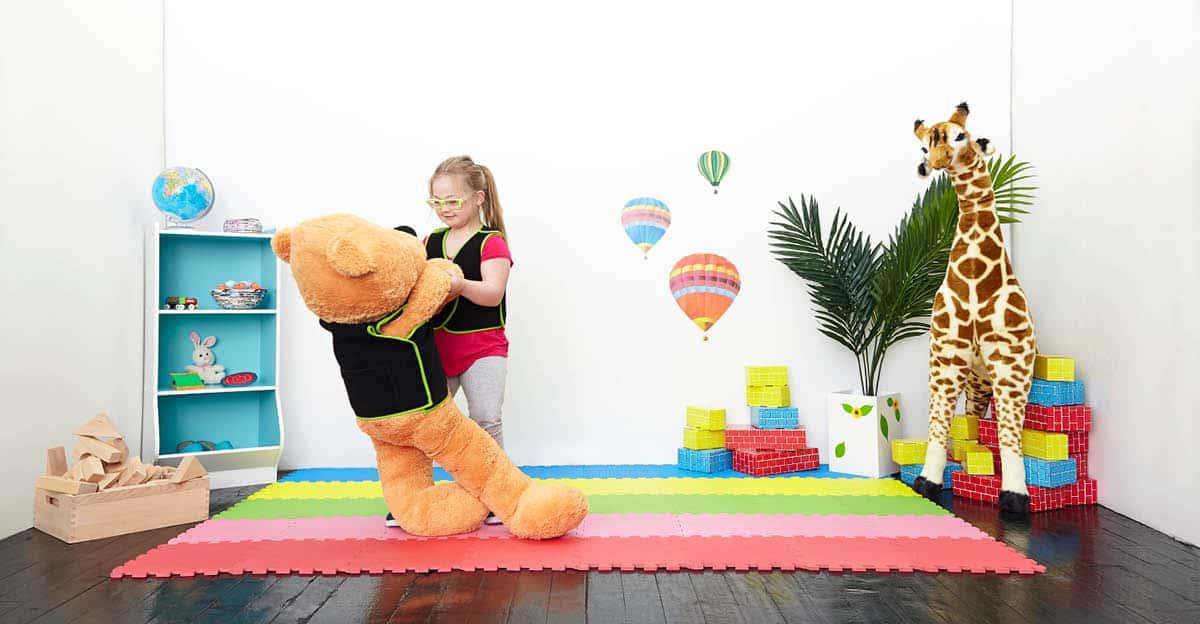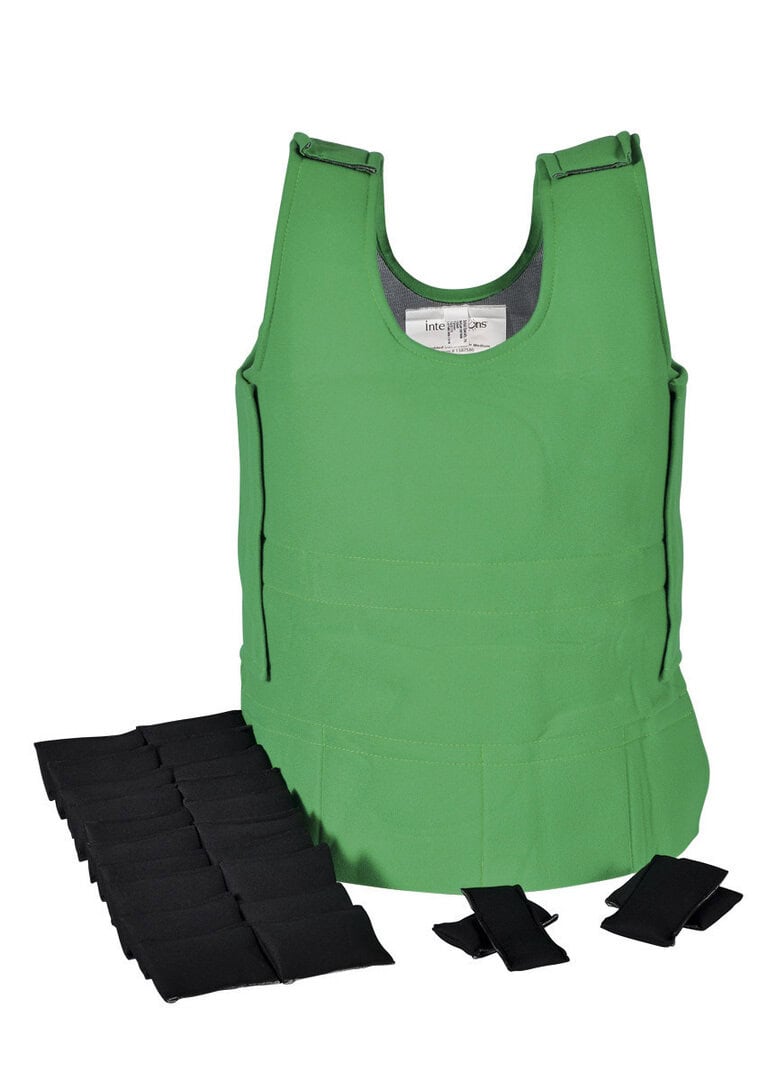Children with sensory challenges may be overly sensitive to touch, movement, sights, or sounds. Other students have trouble with self-regulation, which may impact focus, attention, and behavior. Pressure vests and weighted vests are often the chosen protocol for these types of sensory and social-emotional issues. Let’s take a practical look at why weighted and pressure vests may benefit some students.
Physical and Occupational Therapists will often recommend a “sensory diet” rich in heavy work tasks like pulling a heavy wagon, carrying books or grocery bags, doing chair push-ups, or crawling and tunnel games. These proprioceptive activities stimulate the deep touch receptors below the skin and in the muscles and joints, which may help activate the neurotransmitters dopamine and serotonin. This duo, often labeled the “happy chemicals,” helps promote the body’s sense of pleasure, calm, and well-being.
Sensory Interventions: Weighted & Pressure Vests
As a sensory-based intervention tool, weighted vests and pressure vests are often used to supplement the daily dose of deep touch pressure activities listed above. Studies indicate that Occupational Therapists, in particular, use weighted vests in the scope of their practice (Olson & Moulton), including with children with attention deficit disorder or autism spectrum disorder.
Potential Benefits of Using a Weighted Vest
Weighted vests are typically designed with pockets or an attachment option for the weights at the shoulder girdle area for proximal input and stability.
Some small sample research studies show positive results on the use of weighted vests for increasing on-task behavior (Fertel-Daly, Bedell & Hinojosa ; Vandenberg ; Lin, Lee, Chang & Hong). Weights may vary with each student, but best practice recommendations often list 5% of the child’s body weight as a starting calibration. Wearing times may vary as well according to the child’s sensory registration level. Busy school days often make pairing the vest time with an activity more successful in compliance vs. a strict on/off time.
Potential Benefits of Using a Pressure Vest
Pressure Vests are typically designed with some type of neoprene or similar material. Rather than weight, these vests provide an all-over compression to simulate a deep hug effect. Some children find these a more tolerable wearing experience and/or can be an alternate option when weighted vests are contraindicated due to musculoskeletal issues.
Shop Specialized Weighted and Pressure Vests
The online store features a range of options for weighted and pressure vests to fit your student’s needs. Consult with your child’s OT or PT for best practice recommendations and use.
Find More on Supporting Students with Special Needs
To find more inspiration, encouragement, and ideas for engaging with and best supporting students with special needs, visit the Special Needs category on our blog. You’ll find great suggestions for tools, activities, and more.
Shop All: Sensory Processing Tools
Cecilia Cruse
Cecilia Cruse, MS, OTR/L has a BS degree in Occupational Therapy from the University of Florida, and her Master’s degree in Education from Georgia State University. She is SIPT certified and has over 25 years of experience in pediatrics with school-based services, acute care, and outpatient pediatric settings.










Leave a Reply